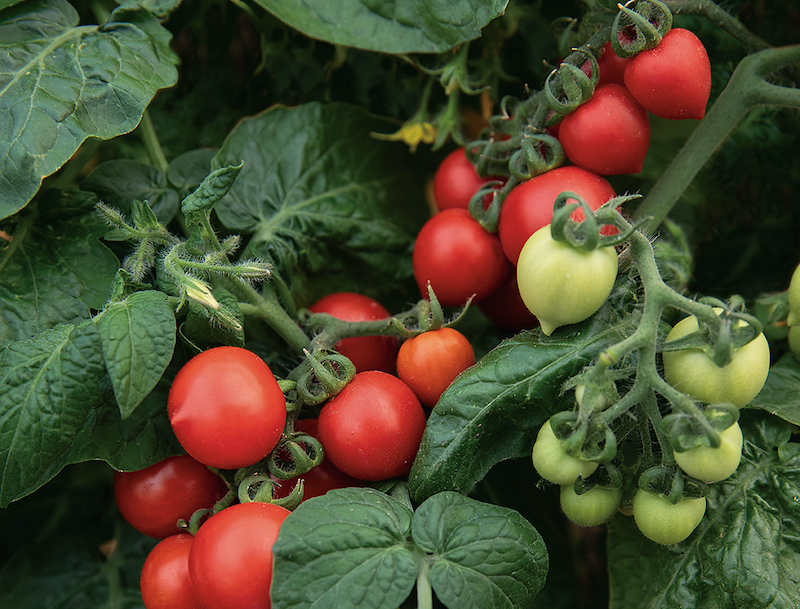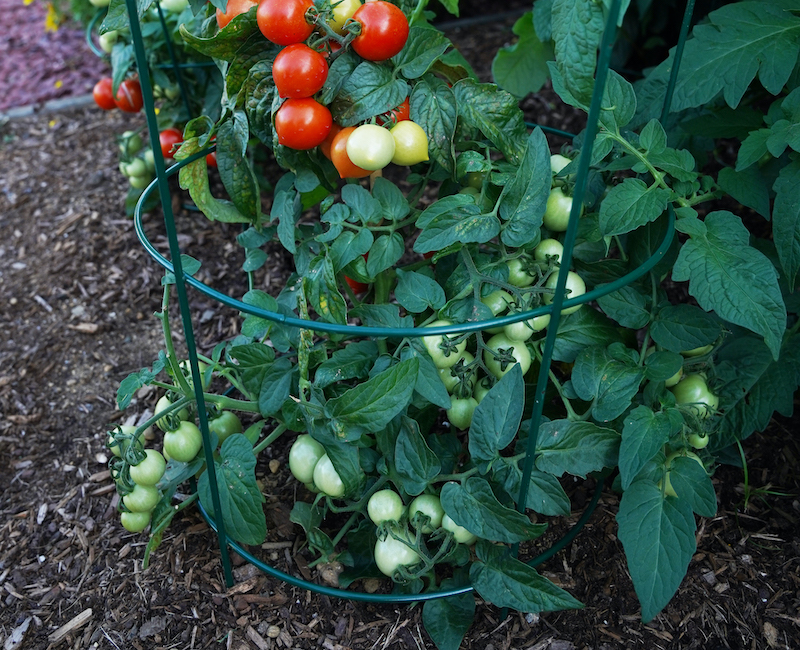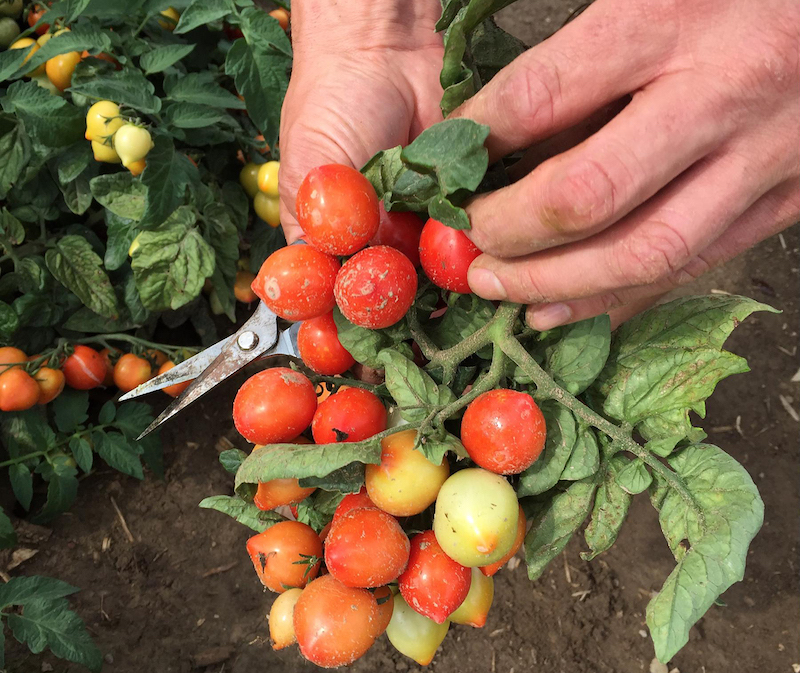By some accounts, tomatoes are the most widely grown crop in American home gardens. Native to Central and South America, centuries of breeding Solanum lycopersicum have yielded an incredibly diverse range of cultivars for growers to enjoy. These plants love heat and long summer days. Tomatoes are fairly easy to grow, especially if basic care requirements are met.
Choosing the right cultivar for the situation is also very important. Some tomatoes stay compact, while indeterminate, vining types continue growing throughout the season. Different cultivars also offer different levels of disease resistance; this is an important factor in locations that have seen tomatoes suffer from diseases in previous years.

Caring For Tomatoes
Tomatoes love the sun and heat, so take this into account when selecting a good planting site. Working plenty of organic matter like well-rotted compost into the soil prior to planting boosts soil fertility and improves soil structure. To maximize the growing season, tomato seeds are typically started indoors about 8 weeks before transplants are planted in the garden. There is a significant range in time to maturity and other characteristics between cultivars, so selection of variety is important. Regular soil moisture and pinching to keep growth under control are other key care factors.
Planting Tomatoes
If possible, minimize the potential for disease by positioning tomatoes where tomatoes, eggplants, potatoes, or tomatillos have not been grown for 3 or 4 years. Transplant tomato starts outdoors only after all danger of frost has passed and the soil is warm. When planting, remove the lowest leaves from the young plant, dig a trench a few inches deep, and plant the tomato root mass and stem in the trench, burying it so the lowest remaining leaves are just above the soil line.
Space plants based on the mature width of your specific variety. One good starting point for spacing might be to keep plants 24 inches apart in rows 3 feet apart. Adding a trellis or tomato cage at planting is helpful in keeping plants upright and makes it easier to harvest fruits.

Watering Tomatoes
Consistent moisture will bring out the best in a tomato plant and its fruit. Keep soil around newly planted tomatoes evenly moist for a week or two following planting to encourage establishment. During the growing season, tomatoes require about an inch of water weekly through rainfall and supplemental irrigation.
Try to water the plants early in the morning with a slow trickle near the base of the plant; splashing the foliage will encourage disease. Water plants deeply to force roots to grow more deeply, and adjust watering depending on the soil type as needed. For example, sandy sites may need lighter, more frequent watering than clay types. Inconsistent soil moisture may lead to blossom-end rot on fruits.
Fertilizing Tomatoes
A soil test is the best way to determine if any amendments like organic matter or sulfur to lower the pH should be worked into the site prior to planting. It will also reveal if nutrients are lacking and help shape a fertilizing regimen. Without a soil test, a general regimen for tomatoes is to work fertilizer with an NPK ratio similar to 10-20-10 into the soil at a rate of 1 to 2 pounds per 100 square feet. Tomatoes are heavy feeders but excessive nitrogen can lead to vegetative overgrowth and low fruit yield. Apply another feeding as a siddress when fruits begin to grow. Work a band of fertilizer like a 27-3-3 or 10-3-1 formula shallowly into the soil alongside the plants at a rate suggested on the label.
Growing Tomatoes In Pots
Tomatoes can grow quite well in containers, but choosing an appropriate variety and container size are critical to ensuring success. Choose a type with a compact growth habit; these are often labeled as “patio” or “bush” tomatoes. Containers must be large enough to support even a compact tomato. Something with a volume of about 5 gallons and a diameter of 14 to 20 inches is often ideal. Plenty of drain holes and heft will ensure good drainage and keep the plant from tipping over. A trellis or cage is also helpful in keeping the plant tidy.
Plants in containers will dry out much faster than their in-ground counterparts. So, plan to check the plant on a near-daily basis and water it frequently.

Harvesting Tomatoes
The length of time until harvest varies significantly between tomato cultivars, which are often separated by harvest time. Some, like Early Girl and Fourth of July, reach maturity in about 50 days. Mid-season varieties often take more than 70 days. When tomato fruits reach a usable size and mature color, they are ready to harvest.
Some types will drop off of the plant when ripe, while others can be gently tugged off or cut off of the plant in clusters. Fruit that is a mature green and has reached full size will often ripen well if picked. This is especially useful at the end of the growing season to allow one last harvest before frost.
 |
Author Angela Ryczkowski - Published 3-17-2023 |
